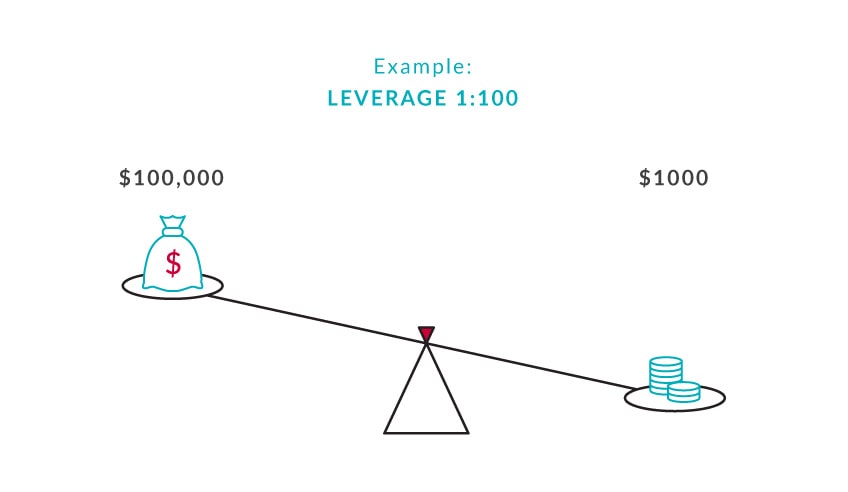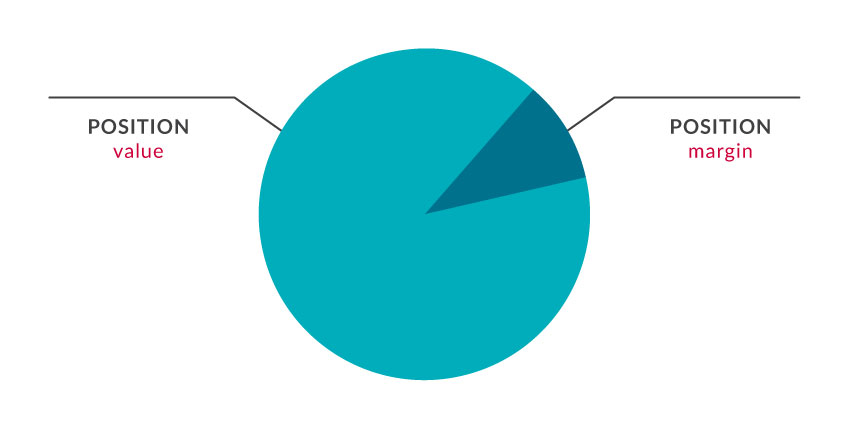Financial Leverage enables traders to control market positions that are much larger than their initial investment.
Financial leverage definition
Financial Leverage enables traders to control market positions that are much larger than their initial investment. Effectively, financial leverage takes the form of a loan that a trader takes from their broker, helping them invest in the foreign exchange market, stock market or other global markets without needing to put up a large amount of their own capital.
Why is financial leverage offered?
Financial leverage is a useful tool for investors who wish to enter the market with relatively small starting capital. For example, using financial leverage of 10:1, a trade that ordinarily would have required an investment of $100,000 can be placed with only $10,000. This has enabled would-be investors that were previously unable to meet the minimum requirements for market entry to begin investing.
The use of leverage when investing in the Forex market has opened it up to retail traders when it had traditionally only been available to major financial institutions and high net worth individuals. This is since, to make significant profits from the relatively small daily movements in the Forex market, a trader needs to invest a large amount of capital – something retail investors don’t usually have access to.
Through the advent of the internet and other advances in technology, financial markets are now much more accessible to ordinary people from the comfort of their own home. The daily trading volume on the Forex market has grown exponentially in the last decade, as an increasing number of retail traders have entered the market. The availability of derivatives on Forex, such as Contracts for Difference (CFDs), which allow traders to speculate on whether currencies will rise or fall without taking ownership of the underlying asset, have fuelled this exponential growth.
How does financial leverage work?

Financial leverage is expressed as a ratio, for example, 1:1, 1:10, 1:100. The amount of leverage used and a trader’s initial investment determine the size of trades they will be able to control. Using an initial investment of $1,000 as an example, varying levels of financial leverage would have the following effects on the trade size available to an investor:
| Leverage | Trade Size |
| 1:1 (No Leverage) | $1,000 |
| 1:5 | $5,000 |
| 1:10 | $10,000 |
| 1:20 | $20,000 |
| 1:50 | $50,000 |
| 1:100 | $100,000 |
As can be seen from the table above, the higher the leverage used, the larger the trade size an investor can control. Although using leverage can be beneficial for a trader, it also involves risk. To gain a thorough understanding of how financial leverage can both increase profits and lead to larger losses, a trader must first understand the concept of margin.
What is margin?

Margin is basically the deposit required to operate using financial leverage. Essentially, this will be an amount that an investor must have in their account that will be reserved when they open a trade using leverage. The amount of margin required depends on the size of the trade being placed and the leverage being used. Using a trade size of 1 standard lot ($100,000), the margin required would change as follows based on the leverage used:
| Leverage | Margin Required |
| 1:1 | 100% |
| 1:5 | 20% |
| 1:10 | 10% |
| 1:20 | 5% |
| 1:50 | 2% |
| 1:100 | 1% |
As can be seen from the table above, the higher the financial leverage used, the lower the margin required to open a position on the market. So, if an investor wanted to open a market position of 1 standard lot ($100,000) using financial leverage of 1:50, they would need to have $2,000 in their account, which would be used as margin.
The benefits and risks of financial leverage
As mentioned previously, financial leverage is beneficial for retail traders, especially those that have less capital with which to invest. However, although using leverage can increase the potential profit an investor may earn, it also carries a certain amount of risk and can lead to greater losses.
Traders that enter the market undercapitalised and overleveraged can quickly see their investment disappear in the smallest of market moves. Due to the margin required to guarantee a leveraged position, if a trader opts for high leverage and only invests a small amount of capital, most if not all their investment would be reserved as margin. This means that, if the market were to move against them, they could stand to lose all their invested capital on a single trade.
As such, it is of paramount importance that investors looking to enter the market for the first time have a thorough understanding of both leverage and margin, as well as how the Forex market works, before placing their first trade. A sound risk management strategy is also necessary, including the use of appropriate levels of leverage based on available capital, as well as the use of Stop Loss and Take Profit levels.
Finally, it is always advised that beginners start by trading on a Demo Account before investing real money, as this will enable them to get a feel for the market and develop their trading strategy, without risking any of their own capital.
Read our next article: When to sell your shares on the stock market





